These are some of the main Facts about PCOS
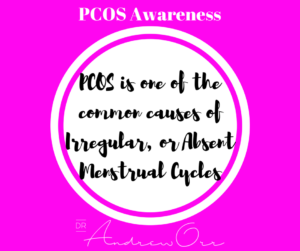

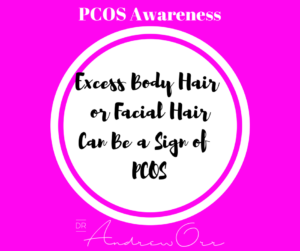
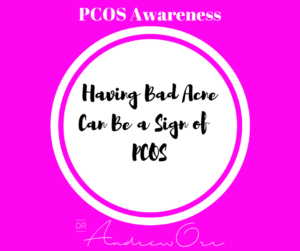

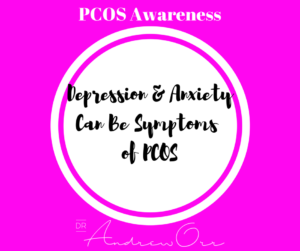
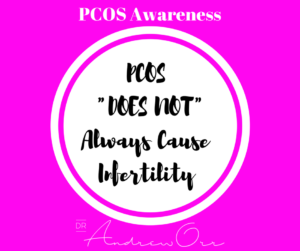
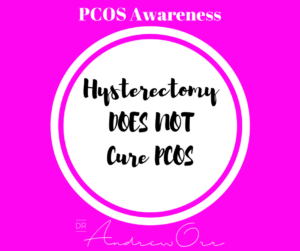
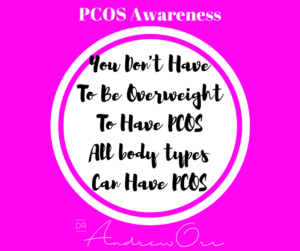
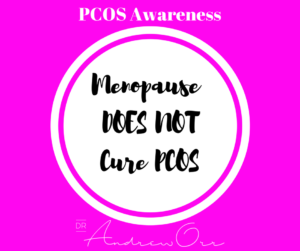
Regards
Andrew Orr
-No Stone Left Unturned
-Women and Men’s Health Advocate
-The PCOS Experts
These are some of the main Facts about PCOS










Regards
Andrew Orr
-No Stone Left Unturned
-Women and Men’s Health Advocate
-The PCOS Experts
The word “Barren” comes originates from the French word ‘Brehaigne’, which means not producing, incapable of producing offspring, infertility, infertile; sterile.
Sounds terrible doesn’t it?
Fortunately very few women are ‘sterile’ and the word “infertility” is often misused in our modern society. Nobody is truly infertile, unless they actually have reproductive organs missing, or have genetic abnormalities that will actually prevent conception from happening etc. When a couple is having trouble conceiving, we should really use the word “sub-fertility” instead of “infertility”
The problem with talking fertility, sub-fertility, or infertility is that we often reference, target, or even blame the woman. Yes, women are often the blame of not being able to conceive a child and therefore the myth of the barren woman still runs deep and is very much in existence and kept alive by all concerned today in our modern world.
But is conception and the ability to conceive a child inherently the fault, or responsibility of the woman?
The answer to that is “No!”, but there is still this expectation, or focus, that not being able to conceive all falls back on a woman. Sometimes women actually wrongly blame themselves, or wrongly take on that responsibility too. Some women will even take on that burden, to protect a partner, who may actually be the main issue.
Then we now have an area of medicine that has its focus as being the woman, because women are the primary driving force for wanting to have a child. Hence the vicious cycle continues in this terrible loop and then many, practitioners included, buy into the myth of the barren woman and so the cycle continues over and over again.
Well, I am here to tell you that women are not the only part of having a child and that men play just as big a part when it comes to fertility issues and not being able to conceive.
No matter what you get sold, or what BS (bullshit) you are sold, while pulling on your ‘I need a baby heartstrings’, to make you part with your hard earned money, the fact remains, and will always remain, that it takes a sperm and an egg to make a baby. That is basic biology 101 and no matter what someone tries to tell you, sperm quality is just as important as egg quality in this equation.
Every day I see practitioners, both medical and in complementary medicine, focussing in on women as the primary focus of fertility and actually feeding the myth of the barren women by their very actions.
Many times the men are overlooked, or ignored, or completely disregarded in the fertility equation. Not only is this unethical, to just treat and focus on the women when it comes to fertility treatment, but it is highly negligent as well. Men are not born with an inherent right to automatically be able to conceive and worse still, the male sperm levels have fallen by as much as 60% in the last 70 years, with sperm quality levels said to be dropping at an alarming rate.
So why is the focus, the burden, the guilt and the whole emotional baby roller coaster left solely to women?
Well, I have explained that practitioners are to blame, the fertility profession is to blame, society is to blame, guilt is to blame and last of all men are a big part of the issue too.
Men are often to reluctant passengers in the fertility journey and are often very happy to bury their heads in the sand and pass the responsibility of not being able to conceive onto a woman. Then many men are told their sperm is fine, when in fact it is far from being fine.
Over 50% of fertility issues are related to male factors and up to 85% of miscarriage issues may be related to male chromosomal, or DNA issues related to sperm. As I said before, research has now shown that the male sperm quality has fallen by up to 60% over the last 70 years and is actually on the decline. Men are often the bigger part of the fertility picture and it isn’t just the woman at all.
Semen analysis parameters are based on what is needed for Assisted Reproduction (IVF, IUI, ICSI) , not based on what is needed for natural conception and this is where some of the biggest issues lay.
Misinterpretation of semen analysis and misinterpretation of parameters have many men believing they have OK sperm, when in fact it is far from being OK. With modern procedures such as ICSI, we only need a few single sperm to be able to fertilise eggs and this can still be considered ok, because at least there was some sperm to fertilise the egg in the first place.
A few single sperm, or a few hundred sperm, or even a few thousand sperm is not OK when it comes to natural conception. We actually need a few hundred million sperm for it to be OK and even then they need to be motile and they need to be swimming properly (rapid progressive) and actually be of good shape (morphology)
While a semen analysis is often the first part of male fertility evaluation, it is also very limited. While we can look at morphology, motility, concentration, count etc, it does not tell us about the actual quality of the sperm inside. Many sperm may look ‘OK’ via a semen analysis, but inside their DNA integrity is poor and there are high amounts of DNA fragmentation and this can only be measured by a DNA fragmentation analysis. Even then, each time a man ejaculates, the quality of the sperm will be different and can differ by up to 20% in each ejaculate.
We also know that what a man eats, drinks and even his physical and emotional health will affect his sperm quality and that a man’s physical, dietary and emotional health can be passed onto his offspring through the sperm. This is why it is important for a man to get his physical and dietary and emotional health in check way before he tries to conceive a child with his partner.
We always say that the healthier a man is, the healthier his sperm is and the healthier the woman is, the healthier her eggs will be also. A healthy man and a health woman produce healthy babies.
I have been assisting couples with fertility and pregnancy for over 20 plus years now, and helped over 12,500 plus babies into the world, and I can tell you that conception is not just about the woman. It gets back to basic biology 101 that it takes a sperm and an egg to have a baby.
Even when couples are having issues trying to conceive, or doing IVF, or however they are trying to conceive, there will be some issue on the man’s side and the woman’s side. Unless there is absolute infertility on one side, or the other, there will always be a bit of both the man and woman to work on to assist in being able to conceive.
While the myth of the barren woman runs deep in society, fertility clinics and through the guilt handed down from their fellow sisters and mothers, fertility issues and the right to be able to conceive ‘does not’ fall solely into the hands of a woman, far from it.
Men are an equal part in the fertility equation and men need be held just as accountable when it comes to trying to have a baby, or if there are difficulties in conceiving.
No matter what anyone tells you, a man needs to be part of treatment, management and support of the journey to have a baby. This is a big part in my multi-modality fertility program.
Fertility isn’t just the responsibility of the woman, it is the responsibility of the man as well and I make sure both the man and the woman are properly investigated, clinically managed and helped with treatments as well.
If you do need help with having a baby, then please give my friendly staff a call and find out how my fertility program may be able to assist you
Regards
Andrew Orr
-Master of Reproductive Medicine (MRepMed)
-No Stone Left Unturned
-The International Fertility Experts
Men, it is time to eat more nuts, to help your…. ummm… NUTS!
But this isn’t just about your family jewels, this is about helping with what they produce and helping you carry on your family tree. A diet rich in nuts has been shown to improve sperm count, motility, morphology and sperm DNA.
Recent research published in the European Society of Human Reproduction and Embryology (July 4th 2018) has shown the men that regularly eat nuts have improved sperm quality and function and less DNA fragmentation in their sperm.
In many forms of traditional medicines, foods and the shapes of foods, often correlate to an organ in the human body. To give you an example, walnuts look like a lung and they also look like a brain. There are now research papers to show that walnuts may assist with brain function and help with lung function as well.
Many of the foods we eat may also assist fertility. Many of these foods may look like a reproductive organ, or contain seeds in them. Fruits such as dragon fruit and kiwi fruit look like the shape of a testicle, or an ovary and have seed in them, which traditional medicines often say are good for the seed (meaning eggs and sperm on a fertility level)
Hence it is no surprise that nuts, can help with… ummm… well…. a man’s nuts (reproductive organs)
This new research showed that the inclusion of mixed nuts (almonds, hazelnuts and walnuts) in a regular diet significantly improves the quality and function of human sperm, according to results of a randomized trial which measured conventional semen parameters and molecular changes over a 14-week study period. The findings, say the investigators, ‘support a beneficial role for chronic nut consumption in sperm quality’ and reflect a research need for further male-specific dietary recommendations.
Results firstly found significantly higher levels of sperm count, vitality, motility and morphology in the men randomised to the 60 g/day nut diet than in those following their usual diets free of nuts. Moreover, the subjects in the nut group also showed a significant reduction in their levels of sperm DNA fragmentation, a parameter closely associated with male infertility. Indeed, it was this change in the level of DNA fragmentation in the sperm cells by which the investigators explained, at least in part, the improvement in sperm count, motility and morphology.
Nuts are dense foods containing many antioxidants, omega 3 oils, amino acids and folate. This may explain why nuts are so beneficial to improving sperm quality overall. Antioxidants help with oxidative stress, which can be a big factor in DNA damage to sperm and poor sperm quality. Antioxidants and amino acids help with proper formation of sperm at the cellular stage and help prevent damage to sperm cells and help with repair and formation of the DNA of sperm as well.
There is much more growing evidence through research literature that healthy lifestyle changes such as following a healthy dietary pattern can assist conception. Healthy parents make healthy babies. It takes a sperm and an egg to make a baby and healthy men produce healthy sperm. This is why it is important for not only the woman to be healthy prior to conception, but for the man to be healthy as well. The health of the father is passed onto the child and there is growing evidence to support this now.
When it comes to fertility and trying to have a baby, males need to be an equal part of the equation. Fertility isn’t just a woman’s responsibility and fertility issues are not just related to women.
Regards
Andrew Orr
-No Stone Left Unturned
-Women’s and Men’s Health Advocate
Story Source:
European Society of Human Reproduction and Embryology. “A diet rich in nuts improves sperm count and motility: Improvements associated with better male fertility and explained by a reduction in sperm DNA fragmentation.”
New research published in Human Reproduction, has found that those who follow a “Mediterranean” style diet at least six months before assisted reproductive treatment have a significantly better chance of becoming pregnant and giving birth to a live baby than women who did not.
As part of my Fertility Program, one of the first things I talk to couples about is the importance of a healthy diet that has adequate protein, lots of vegetables, seeds and nuts, healthy oils, adequate water intake, electrolytes and cutting out all the refined carbohydrates that cause inflammation.
The hard thing is that I hardly see a couple following those health food principles, with many not even really knowing what a health diet is. The diet that I promote is based on my specially formulated PACE diet.
Previous studies have shown that when refined carbohydrates are cut out and replaced with proteins, essential fats and good carbohydrates, such as fruit and vegetables, that the clinical pregnancy rates shot up by 80%. (Fertility & Sterility 2012 Volume 98 issues 3 Page S47)
In this new study, researchers focussed in dietary patterns rather than individual nutrients, food, or food groups. They found that those who ate lean protein, more fresh vegetables, fruit, fish and olive oil, had a 70% greater likelihood of achieving a successful pregnancy and birth compared to women who didn’t follow this style of diet.
The research outcomes found that out of the 244 women in the study, 229 women (93.9%) had at least one embryo transferred to their wombs; 138 (56%) had a successful implantation; 104 (42.6%) achieved a clinical pregnancy (one that can be confirmed by ultrasound); and 99 (40.5%) gave birth to a live baby.
The most important message to come from the study is that women attempting to have a baby should be encouraged to eat a healthy diet, such as a Mediterranean style diet, because it may help increase the chances of successful pregnancy and successful live birth.
The researchers did note that when it comes to conceiving a baby, diet and lifestyle are just as important for men as for women. Previous studies from the same research group showed that male partners that adhered to the same sort had better semen quality.
A healthy diet is important for all couples prior to trying to conceive and should be a part of any preconception planning by all healthcare practitioners assisting couples with fertility.
While this study focussed on improving assisted reproduction pregnancy rates, this style of diet should be adopted by any couple wanting to have a baby and should be implemented at least 6 months prior to conceiving. This is why it is essential for all couples to receive counselling and guidance on the importance of a healthy diet and having a healthy lifestyle as well.
This is a foundation of my fertility program that has helped over 12,500 babies into the world and continues to assist many more couples reach their goal of becoming parents. If you would like to find out more about my fertility program and how it may assist you, please give my friendly clinic staff a call to find out more.
Regards
Andrew Orr
-No Stone Left Unturned
-The International Fertility Experts
Recent studies have shown that zinc deficiency can negatively affect the early stages of egg development, reducing the ability of the egg cells to divide and be fertilised.
This may affect fertility “months” in the future and why preconception planning is so important for a couple. The researchers will be presenting their results at the American Physiological Society annual meeting at Experimental Biology 2018 in San Diego.
Millions of couples around the world struggle with fertility issues and the ability to conceive a child. While there are many factors that can make conception difficult, ovulation disorders and sperm issues are a leading cause of couples not being able to conceive. Researchers are finally looking into how vitamins, amino acids and micronutrients affect fertility and in particular the early stages of egg development.
The availability of micronutrients, through diet, amino acids, antioxidants and vitamin supplements, in the ovarian environment and their influence on the development, viability and quality of egg cells is now the focus of a growing area of research. Sperm also need micronutrients, antioxidants, vitamins and nutrients for optimal growth and development too.
This is nothing new to me as this is something I have always focussed on for many years as part my fertility program and as a part of preconception planning and making sure that the couple are in optimal health before trying to conceive.
In human and mammals, the ovary is made up of thousands of structures called follicles, which consist of one oocyte surrounded by layers of support cells, known as somatic cells. At puberty, the body starts to prepare groups of oocytes for maturation, ovulation and fertilization. While a female grows groups of oocytes, which begin to mature each month, only one will be ovulated and have the chance of being fertilized. Many things can influence whether an oocyte will mature correctly and the go on to one day be ovulated, including the presence of sufficient levels of certain micronutrients. To date this has probably been poorly understood by many.
Scientists have recently found more and more evidence to show that zinc is a key player in oocyte development and have been assessing the effects of zinc on egg development extremely early on in the development and maturation of oocytes.
Previously Fertility research and treatment has primarily focused on the larger follicles, called antral follicles, which respond to signals from the pituitary gland to be ovulated.
In humans, preantral follicles have to keep growing for about 90 days before they are ready to ovulate. This is why it is important to focus on egg and sperm quality months before conception is to take place, because this is when both egg and sperm are still growing and maturing and need vital nutrients to develop properly.
In this new research they have examined the smaller preantral follicles, which are still growing and don’t respond to the ovulatory signal yet. Previous studies showed that zinc levels are critical in the antral follicle, but no one had tested the effect of zinc deficiency on preantral follicle growth.
The researchers collected preantral follicles and then matured them in a special cell culture medium. They compared eggs matured in a zinc deficient environment to those grown with normal levels of zinc. The researchers found that preantral zinc deficiency:
The new research shows that zinc plays an important role in oocyte growth at an earlier stage than previously investigated, which is during development and before division. The research also showed why preconception nutrients are needed months before the eggs fully develop to give the best outcomes for a healthy pregnancy.
It is estimated that about 17 percent of the global population may be deficient in zinc, due to poor dietary intake their diet. But the estimate may not include cases of marginal zinc deficiency, where people may be getting zinc in their diet, but not enough for their recommended levels.
People that are more susceptible to zinc deficiency are those with dietary and disease factors such as irritable bowel syndrome, Crohn’s disease, gastrointestinal disorders and liver disease, those with eating disorders, those with certain dietary restrictions, such as vegetarians or vegans, who may not then be taking supplemental zinc.
Preconception planning, care and management is so important for a healthy pregnancy to occur and should be started many months before trying to conceive. This is to ensure that the sperm are in optimal health and quality and also to make sure that the egg quality is optimal and in the best quality it can be as well.
This is what I do for all my fertility patients and is a crucial part of my fertility program that has now helped over 12,500 babies into the world. If you would like to find out more about my fertility program and how is may be able to assist you, please call my friendly clinic staff and they will be able to explain everything to you.
Regards
Andrew Orr
-No Stone Left Unturned
-The International Fertility Experts
Explaining endometriosis to people is not always easy and sometimes you have to use analogies that seem strange at first, but once you get the gist of where I am going with it, it will all make sense. But before I start, I always like to say that please take the personal out of things and just know that what ever analogy I use, it is with good intention and always about helping others.
I just know that when I used the “Endo is like Rust” analogy, which is what it is like, a few people took it to heart as though they had a rusty uterus and this is not what I was saying. Not at all.
Please know that I have loved ones with this horrible disease, so I am here to help, and my main aim now is to help as many people as possible with what I know, and how to treat people properly. I am also about getting the message out there so that women to not have to remain silent about this disease any longer. My motto is, and always will be, “Period Pain is Not Normal”
So, sit back, take out the personal and know that I am writing from a place of caring and sharing and a place of getting the message out there to help you all. Sometimes you just have to tell it how it is, in order for people to sit up and listen, so here we go J
Many of you have read my article of “Rust Never Sleeps and Neither Does Endometriosis” and the reason I wrote this is because endometriosis and how it attacks the body, is very much like how rust attacks metal. If you haven’t read the article, please do so that you can see what I am trying to convey.
I am always doing lots of speaking events and seminars on Women’s Health and also presenting for workshops on Endometriosis. It is so great to get the message out to the world, so that both the public and healthcare professionals can be educated on this subject better.
We need to stop having this disease “Missed” and women being “Dismissed” as I am always saying now. This disease should not be taking 8 years from onset to definitive diagnosis. It used to be 12 years. This is disgusting, to say the least, and there is no excuse for this to be happening, except poor education, sloppy diagnosis, lack of training, negligence and dismissive egos that need an attitude adjustment.
But, in saying that, we also need to teach women to be empowered and not just put up with being told “This is normal”, or “Just go on the pill and it will fix it”. That is bullshit (sorry). But it is true. There needs to be a better way and we need to stand up and say “Enough”. But we also need to not let the disease define you and get caught up in the blame game either.
We also need to get people to stop “Dr Googling” too, as this is also spreading the misinformation. It is great to be educated, but good old “Dr Google” is full of false information and research shows that up to 75% of the health information that the public can access on google, is either wrong, or only partially true.
Now that I have had my little rant about the injustices of many, I would like to share what I have been sharing to others about what endometriosis is really like and how hopefully we can prevent it from returning, hopefully for good.
I do know this is possible with the right care, right follow up treatments and right team of people helping. I see it daily and know what I share to be true. But, again it requires the person to follow the advice given and then to get the information out there. It also requires people to not be defined by their disease and break free from these chains to open their minds to the possibilities of new thought, new treatments and new ways of doing things. We need to not be caught up in what may cause the disease, but what we can do to help those with it now.
Of course prevention is crucial and so important, but once the disease is expressed in the body, what caused it is irrelevant. We can argue about the hypothesis of what may be the initial causal factor until the end of time, but that isn’t helping those with the disease now. The most important factor is how we can help those with it live a normal life and hopefully one day in the future to be free of the disease completely. At least for now, we can look at hopefully giving people a better quality of life than the one they are living each day. From my experience, I do know that this is possible with the right team of people working the help the individual.
To be honest, the most likely cause of this disease is now known to be genetic links, or chromosomal, most likely through the parental mode of inheritance. Gene therapy is probably going to provide the biggest breakthrough in this disease in the years to come. But like any breakthrough, we just have to wait and see what happens there. You heard it here first. I do believe genetics does play a big part, but like any disease, it is not the only contributing factor.
But, all this aside, we need to focus on the here and now to help those who need help now. In order to make change, you need to make those changes required. If you change nothing, nothing will change. I also get how hard it is for those whom have suffered so long to pick themselves up, to make those changes. Believe me, as someone who has been through a major life threatening illness and pain and crawled their way back to good health and do what I do now, I get it. I’ve been to that point of wanting it all to just stop and I get what many women put up with on a daily basis. Pain is pain, no matter where it has stemmed from.
Getting back to the subject at hand, I have now been explaining that Endometriosis is like a weed. Why would I explain it like this?
Like a weed, endometriosis grows and spreads. You can physically remove the weed (surgically), but unless you control the regrowth, seeds have been dropped (endometriosis regrowth) and then the weeds pop up again and start to grow once more. Sound like endometriosis too you?
Like any weed, it needs certain things for its regrowth. We have just talked about the dropping of the seeds ( regrowth) but it needs a food and fuel source to make it grow (estrogens, insulin, inflammatory response from external factors, stress etc). Then once the seeds are fed, the regrowth continues and then the garden is infested with the weed plague once more. Then you need to try and physically removed the weeds again once more and so the cycle begins again. Are you seeing what I am getting at yet?
Just like these weeds, endometriosis is often removed and many people then either believe they are fixed, or they do not do anything post surgery to prevent that regrowth. Before they know it, they again have to go back for more surgery. Often when people do try to control the regrowth (Progestins, Mirena etc), they are only employing one method, for which is either not effective enough, or the weed (Endo) is now resistant too.
This is why we need to employ a multimodality approach post surgery to hopefully complete eradicate the weed regrowth and halt the life cycle of these seeds being spread and to start growing again, thus starting the horrible cycle all over again
Now that we can see how endometriosis is really like a weed that can spread throughout our garden, we need to look at what we can do to hopefully stop it coming back, or spreading into other parts of the body.
Like I said, treatment must be individualised, using a multimodality approach, taking the clinical problem in its entirety into account, including the impact of the disease and the effect of its treatment on quality of life. Pain symptoms may persist despite seemingly adequate medical and/or surgical treatment of the disease.
The real focus needs to be on prevention and treatment strategies post surgery. Even better still, lets prevent it before it starts
There is an ancient Chinese saying – “To try and treat a disease once it is fully expressed into the body is like trying to forge arms once a war has already started, or like trying to dig a well once you are already thirsty – Yellow Emperors Classics of Internal Medicine”
The same goes for endometriosis. Once the disease is there and expressed into the body, it is hard to treat, especially is known methods of treatment are failing and this individualised, multimodality approach is used.
A Multimodality Approach Should Include:
The Royal College of Obstetricians & Gynaecologist guidelines for the “Investigations and Management of Endometriosis” have the following quote:
“Many women with endometriosis report that nutritional and complementary therapies such as homeopathy, reflexology, traditional Chinese medicine or herbal treatments, do improve pain symptoms. They should not be ruled out if the woman feels they could be beneficial for her overall pain management and/or quality of life, or work in conjunction with more modern medical therapies.”
This is why it is vital to take careful note of the woman’s complaints and to give her time to express her concerns and anxieties, as with other chronic diseases, just as I do for all of my patients. Healthcare providers actually need to listen to the woman and her concerns. Women need to be listened to and be heard and be nurtured
It is also important to involve the woman in all decisions, to be flexible in diagnostic and therapeutic thinking, to maintain a good relationship with the woman and for healthcare providers to seek advice where appropriate from more experienced colleagues. This is something that I try to educate all my patients with and something I also try to educate healthcare providers with when I do my seminars and speaking events about Women’s Health issues and diseases like endometriosis.
But while there are thing that healthcare providers need to do, there also things you must do also. These include
Please remember these words :
This is why it is so important to not get caught up in what others have done, or tried and may not now be working for you either. We need to look at you as an individual and treat you as such. What works for one person, may not work for another. This is why an individualised multimodality approach is needed to help prevent and treat this horrible disease and we often need a team of people, on the same page, to help treat this properly.
Don’t forget to “Get A Second Opinion”, or a Third, or Fourth, or Tenth one if needed
In many other areas in life we will get multiple quotes, and opinions. Yet, when it comes to our health, we often only get one quote, or maybe two.
Just because someone has your history, or is nice to you, or maybe recommended by a friend etc, does not make them a good practitioner. It does not mean that you cannot get another opinion. If someone isn’t helping you, then you need to look at changing, no matter who they are, or how well they know your history.
Not every specialist you see is a good surgeon either, so please remember this. You need to have someone who specialises in endometriosis and who has done advanced surgical training, not just minimal training. There is good and bad in every profession and the medical profession is not exempt from this either.
The complementary medicine profession, or allied health care profession exempt from this either. Your health is important and so is the value of another opinion. Not every practitioner has all the answers. If someone isn’t helping you, then don’t be scared to change.
Lastly please remember to know that there is always help out there. I am always here to help people as well. I have a special interest in endometriosis and do a lot of education and research into this disease. I also have masters level post graduate training in this disease and other women’s health and reproductive conditions.
You can always come and see me in person, or make an initial online consult (zoom) for those who live at a distance. I have a great team of people I work with to give you the best help possible. I have a team of some of the best health care professionals and I make sure all of the team I work in with, are at the top of their game in their chosen profession.
Let me be the conductor of your health issues and help you get the treatment and advice you so desperately deserve. I am here to listen to you and hear you. I make sure you don’t have things “Missed” and aren’t “Dismissed “ and why my treatment motto is “Leaving No Stone Unturned”. I am out there as a voice for women and being a crusader for women’s health everywhere. I don’t mind stepping on a few toes, and ego’s to get you the best help possible J
Take care and remember that “Period Pain Is Not Normal” and neither are and other “Menstrual Irregularities” that women face on a daily basis. I know what you go through daily and I am out there making sure you all get heard. Let’s end the silence on this horrible disease for you, and the ones close to me whom I love, adore and care about also.
Regards
Andrew Orr
-No Stone Left Unturned
-Women’s and Men’s Health Advocate
-The Endometriosis Experts
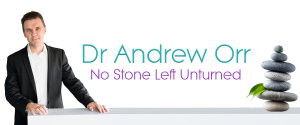
Endometriosis is a condition where tissue resembling the uterus lining grows outside the uterus, such as on the ovaries or fallopian tubes. Endometriosis can spread to every organ in the body and can grow inside, or on the outer surface of the bladder.This is what is known as Bladder Endometriosis.
To learn more about endometriosis and to learn about the symptoms of this disease, you can click on this link to find out more (Click Here)
If endometriosis forms in, or on the bladder, it that can cause severe discomfort and pain. It can also make a woman want to urinate more and also with urgency, pain, burning and frequency.
There are other bladder conditions with the same, or similar symptoms, but endometriosis can also aggravate these conditions, or be present at the same time as well. I will discuss the other forms of bladder pain and interstitial cystitis, which can have similar symptoms to endometriosis affecting the bladder, or bladder endometriosis.
Bladder endometriosis is not common. Reports state that around 2 percent of women with endometriosis may have endometrial growths in their urinary system, with endometriosis growing in, or on the bladder. But even if endometriosis isn’t on, or in the bladder, it can still cause issues with the bladder and cause associated symptoms.
One of the main symptoms bladder endometriosis is pain when the bladder is full and a woman needing to urinate more frequently. It can also cause symptoms resembling a urinary tract infection, but no infection will be found to be present. Women do need to be aware that a significant portion of women with endometriosis are asymptomatic (meaning no symptoms) and may not be aware that they have endometriosis until they have investigations for another reason, such as not being able to fall pregnant.
Some women are more likely to notice symptoms of endometriosis around the time they are due to have their menstrual cycle.
Other symptoms of bladder endometriosis may include the following:
• More frequent need to urinate
• Needing to urinate urgently
• Feeling pain when the bladder is full
• Stinging and burning or painful sensations when passing urine
• Seeing blood in the urine
• Experiencing pelvic pain
• Having lower back pain, more on one side of the body
The definitive diagnosis for endometriosis is via a laparoscopy as this is the gold standard investigation for investigating disease states inside the pelvic cavity. A biopsy is usually taken at the same time to check the microscopic implants of endometriosis, which cannot be seen visually. Normal ultrasound, transvaginal or abdominal, cannot diagnose endometriosis. Blood tests cannot diagnose endometriosis either.
If Endometriosis has spread inside the bladder a cystoscopy would be needed also. A cystoscopy is where a small scope is inserted into the bladder and the specialist can then see if there is endometriosis, or other inflammatory disease in the bladder lining.
The specialist will then see what stage the endometriosis is at. This is a staging system from 1-4, but this is only to let the surgeon know how much of the disease is present. The staging system does not have anything to do with pain levels, as pain levels “are not” related to the extent of the disease. A woman with stage 1 endometriosis could have more pain than someone who is stage 4, and someone who is stage 4, may not have any pain, or associated symptoms at all.
There is no current cure for endometriosis. However, the condition can be managed through a multimodality approach that involves surgery, hormones, pain medication, physiotherapy, herbal medicines, acupuncture, yoga, pilates, diet, lifestyle changes, counselling and an individualised approach. Women with endometriosis need a team approach.
Surgery, via a laparoscopy, is the most common treatment, and definitive diagnosis, for those with endometriosis. If endometriosis had been found in the bladder transurethral surgery will be done at the same time. This involves a scope inside the bladder to cut away any endometriosis in the bladder lining. Sometimes a partial cystectomy is needed to remove an affected part of the bladder.
While surgery is a much-needed part of the treatment and diagnosis of endometriosis, it is not a cure. Endometriosis can, and often does, grow back again, even with the best medical forms of treatments and interventions.
Bladder endometriosis does not have any effect on a woman’s fertility. However, endometriosis does grow in other parts of a woman’s body and reproductive system such as the ovaries, which may affect a woman’s likelihood of conception. But, endometriosis does not always affect fertility.
The Difference Between Bladder endometriosis interstitial cystitis
When endometriosis gets in the bladder it can cause very similar symptoms to another bladder condition called interstitial cystitis. This can often make it very hard to differentiate on symptoms alone.
It is also very possible to have both interstitial cystitis and endometriosis present at the same. This is why further investigations are needed to definitively diagnose both these conditions.
I do have a separate post on interstitial cystitis so that people know more about this inflammatory condition that affects the bladder.
At present there is no real known cause of endometriosis and only speculation as to what the true cause is. We know that endometriosis is estrogen driven (not from estrogen dominance), but the most likely cause is probably due to genetic reasons and being a hereditary condition passed on through the parental mode of inheritance and then expressed into the body. The how, when and why will hopefully be answered in the not too distant future hopefully.
Women with endometriosis in the bladder do need to be careful and managed properly as it can cause kidney damage. There is also some research to show that endometriosis in the bladder can lead to cancer in the bladder, but this is thought to be very rare.
For now, anyone with endometriosis needs to be clinically managed properly through a multimodality team approach mentioned before. Let’s get more education out there so that women with this horrible disease have a voice and we end the silence for these women as well. Hopefully through education, funding and further research, this leads to the cure that women with endometriosis so desperately deserve.
If you do need help with endometriosis, please call my clinic staff and find out how I may be able to assist you. I do have a special interest in endometriosis and am very passionate about women receiving the right care and health management moving forward.
Regards
Andrew Orr
-No Stone Left Unturned
-Period Pain IS NOT Normal
-The Endometriosis Experts
Researchers in the United Arab Emirates (UEA) have found that women who have Polycystic Ovaries Syndrome have an increased risk of uterine cancer, reducing their chances of fertility.
The researchers have also found that women, who are overweight, or obese, are also at increased risk of uterine cancer. Being overweight and obese also increases a woman’s chances of PCOS too, but not all women with PCOS are overweight.
A study published in the Journal of the National Cancer Institute last year has shown that endometrial cancer diagnoses have increased in 26 of 43 countries, mainly due to increasing obesity cases which themselves have tripled in the last 40 years, according to World Health Organisation.
The experts believe that obese women are 10 times more likely to suffer from uterine cancer. Being overweight, or obese also puts women at risk of other diseases such as heart disease and diabetes. Obesity and being overweight also puts women at risk of other cancers too.
There are other factors involves such as an imbalance in the hormones with over-exposure to estrogens can lead to endometrial cancer. This could be due to endogenous causes such as Polycystic Ovaries Syndrome, or exogenous causes such as unopposed estrogens in menopausal hormone therapy if progesterone is not prescribed.
Some women may have genetic family syndromes that is predispose to uterine cancer along with breast, ovarian and other cancers. The causes of uterine cancer may be multifactorial, but this new research does help with screening of women who are suffering from PCOS, or who maybe overweight, or obese.
The researchers did find that regular exercise and healthy lifestyle choices can serve as a protection against uterine cancer, but can also help with PCOS and obesity.
The researchers did warn that women in reproductive years should not take symptoms of endometrial cancer lightly, since early diagnosis and treatment is an essential key to fertility preservation.
Once a condition that only affected women of advanced years, increasing clinical evidence now suggests that even women below 40 years of age can be diagnosed with uterine cancer.
The cancer cases are on the rise due to higher incidence of known co-morbidities such as obesity, diabetes mellitus and hypertension.
Symptoms of the endometrial cancer include:
Early screening is essential and women can safely consider fertility preservation provided that the cancer is diagnosed in early stages.
Fact around uterine cancer
Women who have PCOS, or who are overweight, should be seeking help with dietary and lifestyle management to help prevent them from other risk factors such as certain cancers. According to the world health organisation, the number one treatment for PCOS is changing to a low GI diet and doing regular exercise.
One of the major causes of PCOS is insulin resistance and this is a big factor in many who are overweight, or obese, or have type 2 diabetes. All of these issues can be controlled with the right management. I do need to state that women of all body types do have PCOS and insulin resistance can be seen in all body types too.
If you do need help with PCOS, I do have a special interest in this disease state and may be able to assist you. To find out more, please call my friendly clinic staff. They will be able to explain everything to you and book you in for a consultation.
Regards
Andrew Orr
-No Stone Left Unturned
-Women’s and Men’s Health Advocate
-The PCOS Experts
Are you sick of Painful Periods?
Are you tired of the flares from Endometriosis?
Is your period irregular and messing with your life?
Are you getting bad acne?
Are you sick of having to put up with mood swings and hormone imbalance?
Sick of being “Missed” and “Dismissed” by healthcare professionals and friends telling you that your symptoms are normal?
Are you just not getting the answers to your health issues?
Do you just want to get your quality of life back and be able to do everything you want to do in life?
Many of the health and reproductive issues women face are not normal, but more importantly many of issues can be managed and assisted with right treatments and management protocols. The problem for most women, is knowing who to see, and where to start, for Women’s Health Consultations on the journey to a better life and better health.
Dr Andrew Orr’s multi-modality treatment approach (using medical science and complementary medicines) has helped and assisted thousands women with women’s health conditions locally, interstate and overseas.
Dr Orr has a special interest in conditions such as period pain, endometriosis, PCOS and menstrual irregularities and other women’s health conditions.. You can find out more on some of his social media articles.
If you need someone who cares, someone who listens and can be your caring guide every step of the way through the challenges you are facing, then you need to book in a consultation with Dr Andrew Orr.
Dr Andrew Orr’s mottos are the “Period Pain IS NOT Normal” and he has a “No Stone Left Unturned” approach to every person he guides, manages and assists through their journey to a better quality life and better health.
Dr Andrew Orr has seen women from all over Australia and all over the world and can see you for a consultation in person, or through online services. Through easy to use online services, Dr Orr can now see anyone from all over Australia, or anywhere in the world. *(conditions may apply)
If you are suffering from a particular women’s health condition, or unknown health issue, Dr Andrew Orr is here to care for you and guide you through his step by step multimodality health management protocols and get you the help and care that you are so desperately needing.
* To find more please call Dr Andrew Orr’s clinic, or submit an online enquiry through the website.